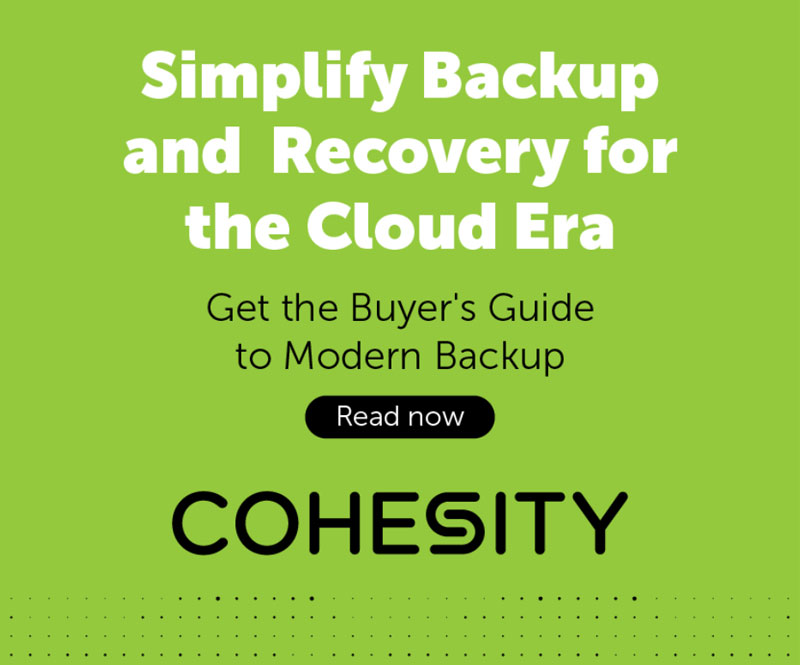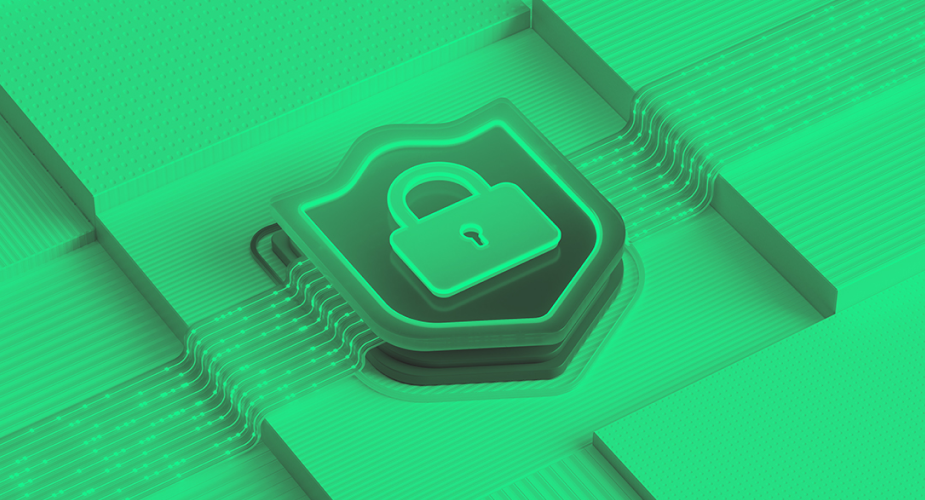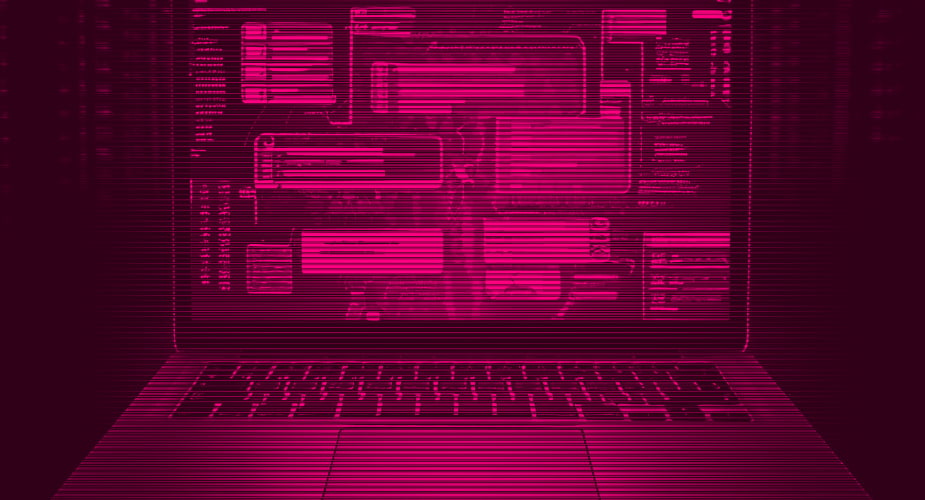Enterprise Data Growth
Backup and recovery slowing you down? Many organizations are reconsidering their approach to backup and recovery as data volumes soar. By 2025, IDC says worldwide data will grow 61% to 175 zettabytes. That’s astronomical growth in a digital economy that some argue won’t even be fully humming by then.
Knowing the deluge is coming, IT teams are feeling pressure to look at their backup and recovery strategies. They are assessing whether their organizations are modernizing enough to support current and future initiatives including boosting operational efficiency, integrating public clouds, and keeping their businesses compliant and secure. They also want to know if existing solutions can be used to derive new insights their businesses won’t be able to afford to miss.
If you’re like most companies today, you’re probably in the process of evaluating your legacy point products against modern backup and recovery solutions. You’re likely trying to determine whether those older products are up to the task of making your operations more efficient as you move additional workloads to public clouds and bring dark data into the light. If that’s the case, you’ll want to have this handy checklist along.
Enterprise Backup and Recovery Checklist
- Hyperconverged Platform
- Single Simple Management Interface and Dashboard
- Support for Both Traditional and Modern Workloads
- Flexible Backup and Quick Recovery
- Cloud Native Architecture
- Unlimited Scale-Out
- Non-disruptive Upgrades
- Guaranteed Data Resiliency
- Maximize Data Storage Capacity and Efficiency
- Extensibility, Security, and Compliance
1. Hyperconverged Platform
Top of the list is identifying a solution that offers end-to-end data protection and management while allowing you to consolidate distinct infrastructure silos into a single solution. Only a hyperconverged platform can do this with the scalability and flexibility required today and in the future.
Legacy backup solutions, typically a patchwork of infrastructure silos, are complex to manage and require expensive, disruptive upgrades. You shouldn’t need to break down your backup and recovery environment into compute, storage, and software silos to be managed separately. Nor should you have to maintain parallel environments to support multiple workloads.
Instead of complexity, you need a single, software-defined, hyperconverged solution that lets you consolidate multiple workloads – including backup, recovery, test/dev and analytics – all on one platform. A key goal in your backup and recovery journey should be simplicity!
2. Single Simple Management Interface and Dashboard
Can the solution you’re evaluating unify your current data scheme, allowing backup, recovery, and policy-based management, across different locations — from a single pane of glass? A backup and recovery tool needs to provide a simple, intuitive, single interface that can manage all aspects of your environment globally. This includes initial deployment of the backup and recovery hardware and software, ongoing management of backups, and eventual recovery.
If you’re an admin or application owner who currently uses multiple point products, we strongly urge you to advocate for a modern, cloud-native, scale-out solution that can be expanded across your whole enterprise. Global Software as a Service (SaaS) management saves time and reduces manual errors.
3. Support for Both Traditional and Modern Workloads
New application types and workloads – such as containerized applications based on Kubernetes, NoSQL databases, plus data and distributed application frameworks such as Hadoop – are hitting your enterprise daily. The same is true for SaaS applications such as Microsoft Office 365, which nearly half of all organizations use today. Diversity looks to be a reality for the foreseeable future.
Can your solution (or the one you’re checking out now) maintain or even improve operational efficiency as more modern workloads emerge? A solution that backups the entire application, not just its data is now a requirement. Your backup and recovery solution needs to support all the applications you’ve always run, as well as new constructs as they’re introduced into your environment.
4. Flexible Backup and Quick Recovery
Data recovery time matters. Today’s enterprises demand instant data recovery and availability to reduce downtime. Legacy backup solutions – and even some of the upstarts on the block – only support the rapid recovery of a few virtual machines (VMs) at a time, resulting in unacceptable downtime. Even some cloud-native solutions perform a complex data stitching (hydrate) before presenting data for recovery, with the restore process happening through a single node.
Your backup needs to recover hundreds of VMs and objects within minutes, not hours or days. So check to make sure the solution you’re choosing offers a distributed architecture that maintains fully hydrated backup copies that allow instant recovery at scale.
5. Cloud-Native Architecture
More companies than ever are turning to the public cloud as their backup destination of choice. It’s faster to get up and running than the on-premises alternative, and it costs less, too. Regardless of your current cloud adoption strategy, your next backup and recovery product needs to include native integration with the public cloud.
A cloud-native solution allows your enterprise to protect applications and data in the cloud while enjoying cloud scalability and cost efficiencies for backup and other workloads. The solution you choose should not only integrate with the leading public cloud providers, including Amazon Web Services, Microsoft Azure, and Google Cloud – but it should also be vetted as a cloud-native architecture. Avoid bolt-on gateways, which are often incomplete, expensive, and add significant complexity to your backup and recovery environment.
6. Unlimited Scale-Out
In today’s fast-paced business, backup and recovery environments change constantly, keeping pace with production environments. An inflexible environment leads to increased costs and increased delays in deploying new production systems as IT operators are forced to contend with adjusting the backup and recovery environment to accommodate new workloads. Horizontal scale-out architectures offer the flexibility to stay abreast of dynamic production environments, ensuring the need to scale isn’t the hold up in getting new services to market.
Will the solution you have continue to scale, reliably, as your data volumes grow and your enterprise workloads become more diverse? Can you start small, avoid overprovisioning, and add capacity when you need to, on-demand and without business disruption? Will your existing vendor and the one you’re thinking about partnering with share its roadmap? A modern backup and recovery solution scales limitlessly, linearly, and without any impact on workload performance.
7. Non-disruptive Upgrades
Today’s enterprises expect backup and recovery solutions to be up and running 24/7/365. This means enterprises are challenged with the legacy approach of taking systems down to patch, upgrade, or augment them. Unplanned outages are unacceptable. And even planned outages should happen infrequently, if at all. What if an organization wants to keep up with the latest and greatest software without the downtime? A modern backup and recovery solution lets backup admins upgrade their clusters without any downtime, using rolling upgrades. In this scenario, each node in the cluster is upgraded individually, which means remaining nodes are left operational for the duration of the maintenance.
8. Guaranteed Data Resiliency
Backing up data once a day is no longer sufficient because modern applications continuously access and modify data. With legacy backup products, if a target device fails during a backup job, the administrator may need to restart the entire backup job, resulting in extended backup windows. This can bleed into production time, impacting Recovery Point Objectives (RPOs) due to the eventual consistent data state the legacy solution supports.
To meet business SLAs, avoid “file not found” errors, and achieve guaranteed data resiliency, your next backup and recovery solution needs to be strictly consistent. In a strictly consistent model, the application or client only receives an acknowledgement of the write once the data propagates to multiple nodes. When shopping for your next backup and recovery solution, insist on a strictly consistent model, whether you’re backing up directly or using a third-party application or running a recovery process. Other important capabilities one should expect from their modern backup and recovery solution include higher level of fault tolerance (node and/or disk failure), Erasure Coding and Replication Factor.
9. Maximize Data Storage Capacity and Efficiency
No matter how many copies of your data are in use or in your backup environment, the total capacity consumed by that data shouldn’t grow appreciably. A critical component of your chosen solution, then, is the use of automatic data deduplication to significantly reduce the number of copies of your data. The result is that your storage capacity goes much further than it would otherwise. Avoid the common trap of using multiple, separate dedupe appliances – this just creates yet another silo!
The problem of multiple copies has such an impact on businesses that an entirely new class of solutions was introduced to address it: data copy management.
The best solution will be one that doesn’t just eliminate the need for multiple data copies, but also offers enterprise-grade deduplication (global variable-length) and compression to help reduce your data footprint, costs, and management headaches.
10. Extensibility, Security, and Compliance
Having effective ransomware protection can save your business from paying ransom and experiencing downtime. Can the solution you want improve your protection against data theft? Modern backup and recovery solutions reduce your attack surface by consolidating existing data silos that have resulted from mass data fragmentation.
A comprehensive approach prevents your backup from becoming a cyberattack target, by quickly detecting potential threats, and responding rapidly. A multi-layered defense, from core to cloud to edge, includes keeping backup jobs in an immutable state so they cannot be mounted by any external system. The most effective backup solution can also detect an attack by continuously monitoring and noticing smaller change rates. And most important, if the worst happens, supports instant recovery.
Modern solutions absolutely must streamline your compliance process now and looking forward. You need a web-scale platform that offers a better way to protect, minimize, locate and monitor data. At the same time, you need Google-like search that makes it easy to sift through petabytes of data from a single user interface.
When your backup solution supports global data visibility and pattern matching, you can easily locate personal information such as credit card and social security numbers. Ask how the solution simplifies your compatibility with the General Data Protection Regulation (GDPR), the Health Insurance Portability & Accountability Act (HIPAA), Payment Card Industry (PCI), and any other regulation required by your industry.
How we can help
Don’t walk, but run, from anyone telling you it’s impossible to get all of your needs for data protection and management – including extension to public cloud and instant mass restore to any point in time – from one vendor. You can have it all, including a single pane of glass for management, from Cohesity.

















